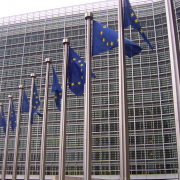Anvisa released on Monday (26/8), the first list of active ingredients of pesticides that will have toxicological reevaluation based on its own methodology. The list was established on the basis of risk criteria for human health, especially of consumers and rural workers. These include the risk of causing cancer, changes in human DNA, mutations, reproductive and endocrine problems, among others.
“For the first time, Anvisa creates a model for re-evaluating pesticides. All the reevaluations to date have been made according to other rules and by demand of organs such as the Public Prosecution Service and the Judiciary ”, says director Renato Porto. For him, the use of the new model will have positive impacts, such as reducing the toxicity rate of products and greater protection for the health of the population.
Therefore, from the new cycle, the lists will be defined based on an objective assessment, using a risk score to define the reassessment-priority pesticides. Check out the first seven nominees below.
List of active ingredients selected for reevaluation
| Ranking | Active ingredient | Use | Toxicological aspect of concern |
| 1st | Carbendazim | Fungicide | Mutagenicity, developmental toxicity and reproductive toxicity. |
| 2nd | Methyl thiophanate | Fungicide | Mutagenicity and endocrine disruption. |
| 3rd | Epoxiconazole | Fungicide | Endocrine disruption, developmental toxicity and reproductive toxicity. |
| 4th | Procimidone | Fungicide | Carcinogenicity, endocrine disruption and developmental toxicity. |
| 5th | Chlorpyrifos | Insecticide, acaricide | Developmental neurotoxicity (under discussion internationally). |
| 6th | Linurom | Herbicide | Endocrine disruption, developmental toxicity and reproductive toxicity. |
| 7th | Chlorotalonil | Fungicide | Carcinogenicity. |
Start and duration of revaluations
The reevaluations will start with the publication of a call notice for companies with pesticide registration, to present updated safety data. The review time for each reassessment process will vary according to the number and complexity of studies presented for each product.
Anvisa clarifies that the seven selected pesticides will not be reevaluated at the same time. The first call for re-evaluation to present Carbendazim’s safety data (the first on the list) should be published in December, with a deadline of up to six months for submission of studies.
The second announcement, Methyl Thiophanate, will be published in January. Thereafter, the next revaluations will open as the previous reviews are finalized.
Toxicity reduction
In Brazil, the pesticide registration has no expiration date. Thus, once a product enters the market, it can be traded indefinitely. Therefore, the reevaluation is the technical and legal instrument for the review of the product safety profile, based on new information produced by monitoring systems or scientific research.
According to Anvisa, analyzing items on the list may lead to a ban on a product or may keep it on the market with measures to reduce the danger arising from its use. Reassessment may also lead to the decision to keep the product in circulation without any further recommendations.
As a new pesticide in Brazil can only be registered in a toxicological category equal to or less than one already existing in the market, the reevaluation becomes a fundamental instrument for the reduction, over time, of the country’s toxicity pattern. That is, this activity tends to remove more toxic products and, therefore, make it impossible to register new pesticides in the same category.
Product Selection
The list released by Anvisa on Monday (26/8) is a result of the application of the rules of the Resolution of the Collegiate Board (RDC) 221/2018 , which established criteria and procedures for the process of toxicological reassessment.
Information for meeting the criteria was obtained from international references from entities such as the European Food Safety Authority (EFSA) and the United States Environmental Protection Agency (US EPA). .
Data from the Food Pesticide Residue Analysis Program (Para), product marketing and identification of uses other than agricultural were also used. The initial list had 43 pesticides indicated by different entities. Also included were products that had their revaluation started before 2008, but did not have this revaluation completed. Then 24 products were selected, according to some characteristics.

Subsequently, Anvisa applied the scoring criteria to each of these 24 pesticides, reaching the seven priorities for the next reevaluation cycle. Among the prioritization criteria were, for example, the marketing position and other uses besides agricultural.

The criteria were and discussed by Anvisa with the Ministry of Agriculture, Livestock and Supply (Mapa) and with the Brazilian Institute of Environment and Renewable Resources (Ibama), which are also responsible for the registration of pesticides in Brazil. Also present were the Ministry of Health, Sanitary Surveillance, the Federal Public Prosecutor and associations of the pesticide industry.
Check out all the stages of a revaluation process established by the new regulatory action of Anvisa – RDC 221, 2018 .

Source: ANVISA


